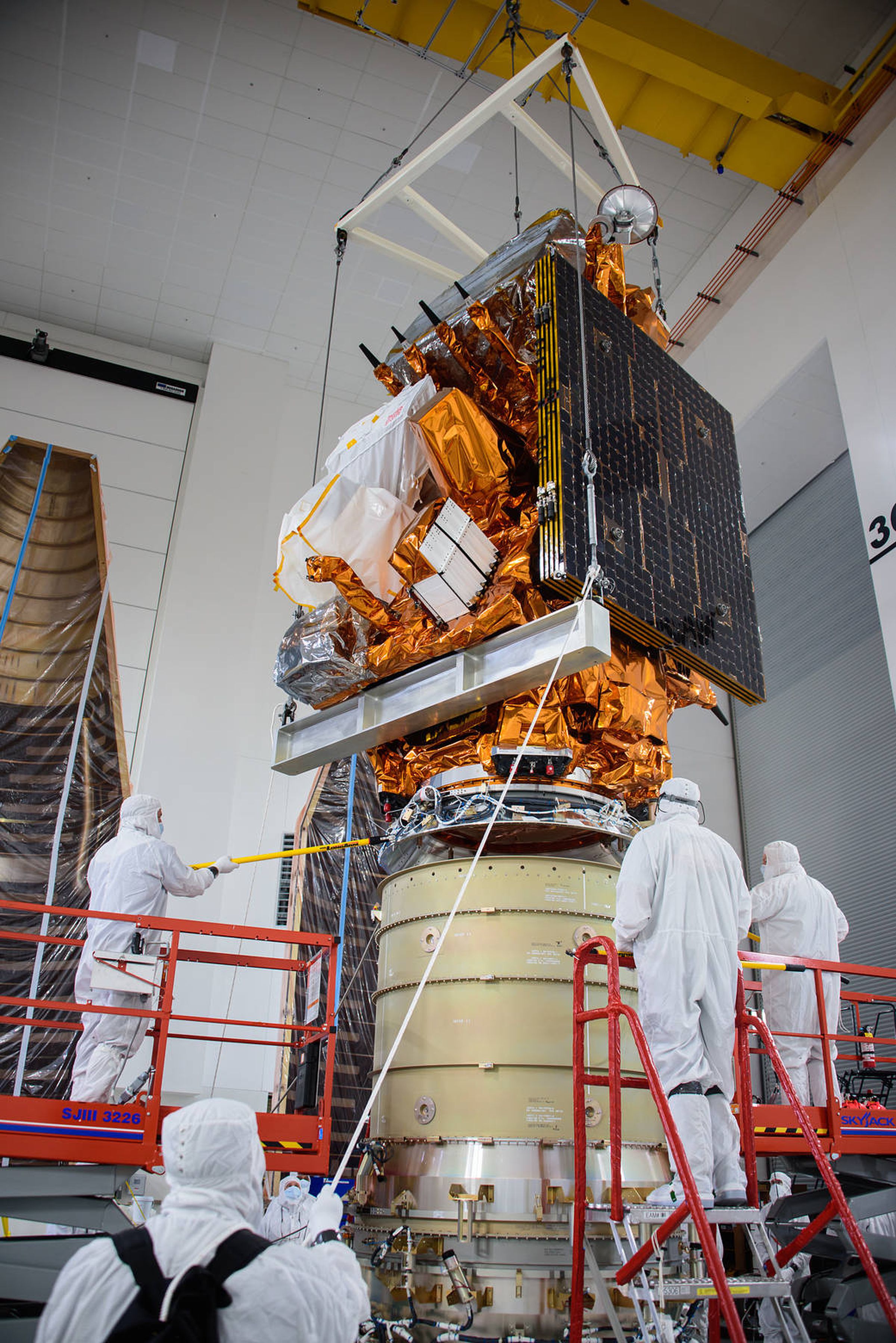Why NASA is launching a new polar satellite
This Thursday, a new Earth observation satellite will launch into space, where it will help scientists forecast the weather and keep an eye on increasingly common extreme weather events. The satellite, called Joint Polar Satellite System-2 (JPSS-2), is part of a global observation system and a product of a partnership between NASA and the National Oceanic and Atmospheric Administration (NOAA).
“NOAA’s weather satellites have never been more critical as extreme weather events continue to be more frequent because of climate change,” said Irene Parker, deputy assistant administrator for systems at NOAA’s National Environmental Satellite, Data, and Services, in a prelaunch briefing. “From 2017 through to September of 2022, the US has experienced 104 separate billion-dollar disasters. By comparison, from 1987 through 1991, there were only 15.”
JPSS-2 will launch in the early hours of November 10th, at 4:25AM ET on board a United Launch Alliance Atlas V 401 rocket from the Vandenberg Space Force Base in California. Also on board will be a test of an inflatable heat shield called LOFTID that could help land heavier payloads on Earth or even on other planets like Mars.


NASA and NOAA have a whole network of satellites pointed toward the Earth to observe its environment, including JPSS-2’s predecessors, Suomi NPP and NOAA-20. JPSS-2 will join these two satellites in a polar orbit, meaning they circle the globe from pole to pole, covering the entire planet twice a day.
“To predict local weather, we need to observe weather from this global perspective,” Tim Walsh, director of NOAA’s JPSS Program Office, said. “A dust storm in Africa can affect the development of a potential hurricane that might impact the east coast. A typhoon in Japan might result in heavy rainfall here in California several days later.”
The JPSS-2 satellite will take measurements with its four instruments, including the Visible Infrared Imaging Radiometer Suite or VIIRS, which acts as the “eyes” of the satellite. It takes visible light and infrared images with a spatial resolution of approximately a quarter of a mile, allowing researchers to see features like domes of clouds called overshooting tops, which can indicate how severe a thunderstorm is. The Advanced Technology Microwave Sounder, or ATMS, can observe through clouds to see the intensity of a storm, while the Cross-track Infrared Sounder, or CrIS, generates a 3D view of the atmosphere and the Ozone Mapping and Profiler Suite, or OMPS, studies ozone in the atmosphere.
In combination, the data from these instruments will help weather forecasting, particularly by monitoring the Atlantic and Pacific oceans. On land, there are many weather stations gathering data. But measurements from the oceans need to be taken by weather buoys, of which there are relatively few, so this data needs to be supplemented by satellite data. Data from the JPSS program was previously used to predict the landfall of Hurricane Ian on the Florida coast and is currently being used to monitor Tropical Storm Nicole.
“JPSS data is a major input into US and international global numerical weather prediction modeling systems,” Jordan Gerth, meteorologist and satellite scientist at NOAA’s National Weather Service, said in a science briefing. “The observations are global, the predictions are local. With JPSS, the quality of local three- to seven-day forecasts is outstanding.”
“While the satellite is designed for weather prediction, that is not the only reason the satellite is being launched”
NOAA does have another set of Earth-monitoring satellites used in weather prediction called Geostationary Operational Environmental Satellites, or GOES. But the GOES satellites sit in a very different orbit from JPSS, in a geostationary orbit 22,300 miles above the Earth’s surface. That means each GOES satellite is always pointed at the same place on the globe, compared to the JPSS satellites, which circle the entire globe and sit much closer at just 500 miles from the surface.
“Because JPSS is a lot closer to the Earth’s surface, we can get different types of observations,” Gerth explained. “For example, if we want to determine the temperature structure of the atmosphere or the amount of water vapor, we can use instruments on the JPSS series to help us with that. JPSS also provides us with information about the detail under the cloud canopy, which can easily translate into information about storm intensity and aid in storm prediction.”
In addition to its weather forecasting duties, data from JPSS-2 will also be helpful in studying other climate conditions. “While the satellite is designed for weather prediction, that is not the only reason the satellite is being launched,” Satya Kalluri, program scientist at the NOAA JPSS Program, said. “The satellite takes images of the Earth twice a day, and with these images, we can look at drought conditions, which are very important for forecasting food productivity.”
Other uses for the satellite data include measuring the ocean color, which can help in monitoring the health of ocean ecosystems and identifying harmful algal blooms. It can also measure air quality by identifying smog or smoke from wildfires, as well as observing changes to the polar ice caps and the hole in the ozone layer.
Having consistent measurements of these factors over decades is key to maintaining records that allow us to understand the long-term impact of climate change, in addition to JPSS-2’s role in predicting weather events in the short term.
“We’re very happy to be able to see this JPSS-2 launch because of its global collection of observations,” Gerth said. “In order to have good local weather predictions, we need to have those global observations to inform our meteorologists.”
https://www.theverge.com/2022/11/9/23449935/nasa-jpss-2-polar-satellite-earth-launch